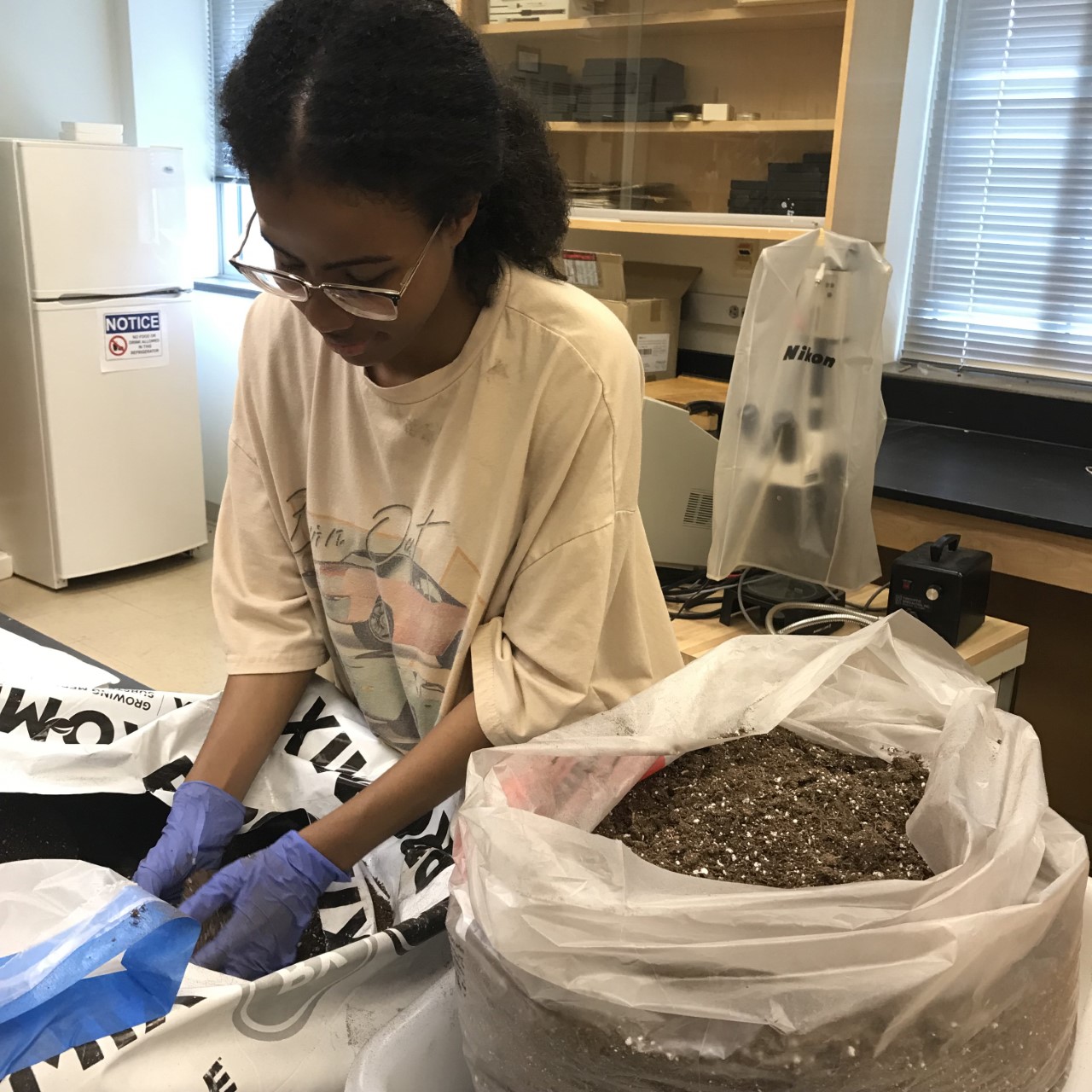 Ullom-Minnich prepares to plant soybeans for her research.
Ullom-Minnich prepares to plant soybeans for her research.
Photo provided by Laura Ullom-Minnich
Ullom-Minnich Performs Environmental Studies Research
Tristen Bronaugh
Senior Laura Ullom-Minnich finished another research-filled summer with Manchester University, preparing herself for graduate school next fall.
Minnich, from Moundridge, Kansas, has been interested in environmental science since a young age. “I was 13 when I got interested in environmental science,” she said. This is when she decided to become a vegetarian. “Eating a vegetarian diet allowed me to reduce my carbon footprint,” she said.
From then on she was hooked, eventually deciding to pursue a degree in environmental science. Why did she choose Manchester? “ I wanted a place that felt like home and that would give me the opportunities that a larger school would not,” Minnich said.
Minnich wasn’t new to conducting research; her first time was last summer with the University. “Last summer’s research aimed to analyze genetic population structure, and differentiation between subpopulations of Eastern Red-backed salamander (Plethodon cinerus) at Merry Lea Environmental Learning Center and Koinonia Environmental and Retreat Center,” she said.
However, this summer was something new. Led by Assistant Professor of Biology Dr. Jennifer D. Robison, and funded by Manchester University’s Dr. R. Emerson and Evelyn Niswander Department of Biology, the goal of the research was to interpret the wounding mechanism that takes place in soybean plants and examine the response in a local wounded leaf. “The project question was: Is there a signal delay of GUS protein over 24 hr timescale between wound area and distal leaves in lines 28-5,” Minnich said. For non-scientific people, GUS is a reporter of gene expression that is used to study plant molecular biology. In simpler terms, her research is about observing the wounding response of the soybean seedlings.
Minnich’s daily routine consisted of planting soybeans, wounding and sampling soybeans, running GUS analysis, measuring the activity, and then writing down all the information she collected so she can put together her research presentation.
One might assume that the weather would bring challenges in environmental science research; however, that was not the case. The entirety of her time conducting research took place in the labs inside the Science Center. What was challenging for Minnich? “Troubleshooting in research can be very tedious,” she said, “but I think it is important to not get discouraged during this hard research process.”
As Minnich’s senior year has begun, her time spent in the lab has stayed the same. “The research is still an ongoing project,” she said. “I’m still analyzing my results but we do think we found where the signal delays are.” Students in the future will be able to use Minnich’s research to conduct their research.
After Minnich completes her research at Manchester she has no intentions of slowing down. She plans to conduct even more research when she continues her schooling: she plans to get her PhD and work with a research institute.
Why should a student consider doing research? Minnich believes that research is one important step in figuring out what you want to do as a profession.
If you are a student pursuing a science degree and interested in partaking in summer research, information and applications are available on Manchester University’s website under student-faculty research.